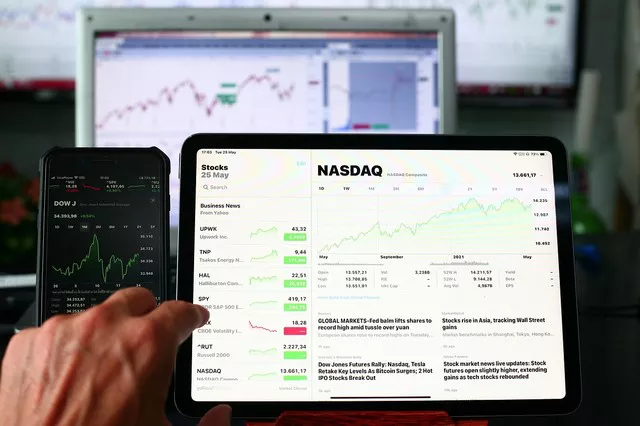Futures trading offers investors the opportunity to participate in various financial markets, including commodities, currencies, and stock indices, by speculating on price movements. While futures trading is often associated with large capital requirements and institutional investors, individuals with limited funds may wonder if it is possible to trade futures with a modest initial investment, such as $500. In this article, we will explore the feasibility of trading futures with a $500 capital, examining the potential challenges, strategies, and considerations for aspiring traders.
Understanding Futures Trading
Before delving into the specifics of trading futures with a $500 capital, it is essential to understand what futures trading entails. Futures contracts are standardized agreements to buy or sell a specified quantity of a commodity, financial instrument, or currency at a predetermined price on a future date. Futures contracts are traded on regulated exchanges, providing liquidity, transparency, and price discovery for market participants. Futures trading allows investors to speculate on price movements, hedge against price risk, and gain exposure to various asset classes without owning the underlying physical assets.
Minimum Margin Requirements
One of the primary challenges for traders with a $500 capital is meeting the minimum margin requirements to initiate and maintain futures positions. Margin is the amount of capital required to open and maintain a futures position, and it serves as collateral to cover potential losses incurred from adverse price movements. Futures exchanges and brokerage firms establish minimum margin requirements for each futures contract, which typically represent a percentage of the contract’s value. Margin requirements vary depending on factors such as contract size, volatility, and market conditions.
Leverage
One of the unique features of futures trading is the ability to trade on margin, which allows traders to control a larger position size than their initial capital investment would otherwise permit. Leverage amplifies both potential profits and losses, as traders are effectively borrowing funds from their broker to finance their positions. While leverage can magnify returns, it also increases risk, as traders may incur significant losses if their trades move against them. Traders with a $500 capital should exercise caution when using leverage and manage risk prudently to avoid excessive losses.
Risk Management
Effective risk management is crucial for traders with limited capital, as a single losing trade can significantly impact their account balance. Risk management techniques such as position sizing, stop-loss orders, and diversification can help mitigate the impact of adverse price movements and protect capital. Traders should only risk a small percentage of their account balance on each trade, typically no more than 1-2%, to minimize the risk of ruin and preserve capital for future trading opportunities. By implementing sound risk management practices, traders can improve their chances of long-term success in futures trading.
Choosing the Right Contract
When trading futures with a $500 capital, it is essential to select contracts that are suitable for smaller trading accounts. Some futures contracts, such as those based on equity indices or agricultural commodities, have lower margin requirements and smaller contract sizes, making them more accessible to traders with limited funds. Additionally, traders should consider factors such as liquidity, volatility, and trading hours when choosing contracts, as these factors can impact trading costs, execution quality, and overall trading experience.
Micro Futures Contracts
In recent years, exchanges have introduced micro futures contracts, which are smaller-sized contracts designed to appeal to retail traders with limited capital. Micro futures contracts offer a more cost-effective way for traders to gain exposure to futures markets without committing large amounts of capital. These contracts typically have lower margin requirements and smaller contract sizes than standard futures contracts, making them ideal for traders with smaller trading accounts. By trading micro futures contracts, traders can diversify their portfolios and access a wider range of markets with a $500 capital.
Commission and Fees
Another consideration for traders with a $500 capital is the impact of commissions and fees on trading profitability. While commissions and fees may seem negligible for traders with larger accounts, they can represent a significant proportion of trading capital for traders with limited funds. Traders should research and compare brokerage firms to find those offering competitive commission rates, low account minimums, and no hidden fees. Additionally, traders should be mindful of other costs associated with futures trading, such as exchange fees, data fees, and overnight financing costs, which can affect overall trading costs.
Education and Practice
Regardless of account size, education and practice are essential for success in futures trading. Traders with a $500 capital should invest time and resources in learning about futures markets, trading strategies, technical analysis, and risk management techniques. Many reputable educational resources, including books, online courses, webinars, and trading forums, are available to help traders improve their knowledge and skills. Additionally, traders should utilize demo accounts and paper trading to practice their strategies and gain experience without risking real capital. By continuously learning and honing their skills, traders can improve their chances of profitability and long-term success in futures trading.
Conclusion
In conclusion, while trading futures with a $500 capital presents unique challenges, it is possible for traders to participate in futures markets and potentially achieve profitable results with careful planning, risk management, and discipline. Traders should be mindful of minimum margin requirements, leverage, risk management, contract selection, commissions, and fees when trading with limited funds. By focusing on education, practice, and prudent risk management, traders can maximize their chances of success and gradually grow their trading capital over time. While $500 may be a modest starting point, it can serve as a foundation for building a successful trading career in futures markets.


